What Is Ackee and Callaloo? Exploring Caribbean Flavors!
Ackee and callaloo are integral components of Caribbean cuisine, each with distinctive qualities and cultural significance.
Ackee, the national fruit of Jamaica, is notable for its unique appearance and culinary application, particularly when cooked with salted codfish to create the renowned dish ackee and saltfish.
The fruit’s history is deeply interwoven with the region’s colonial past, and it is esteemed not only for its flavor but also for its nutritional value, which includes essential fatty acids and vitamins.
Callaloo, on the other hand, is a leafy vegetable commonly used throughout the Caribbean. Its origins can be traced back to West Africa and it has become synonymous with Caribbean cooking.
Rich in nutrients like iron and vitamin C, callaloo is versatile in the kitchen, often sautéed with onions, garlic, and spices.
Together, ackee and callaloo embody the vibrant flavors and nutritional wealth of Caribbean culinary traditions.
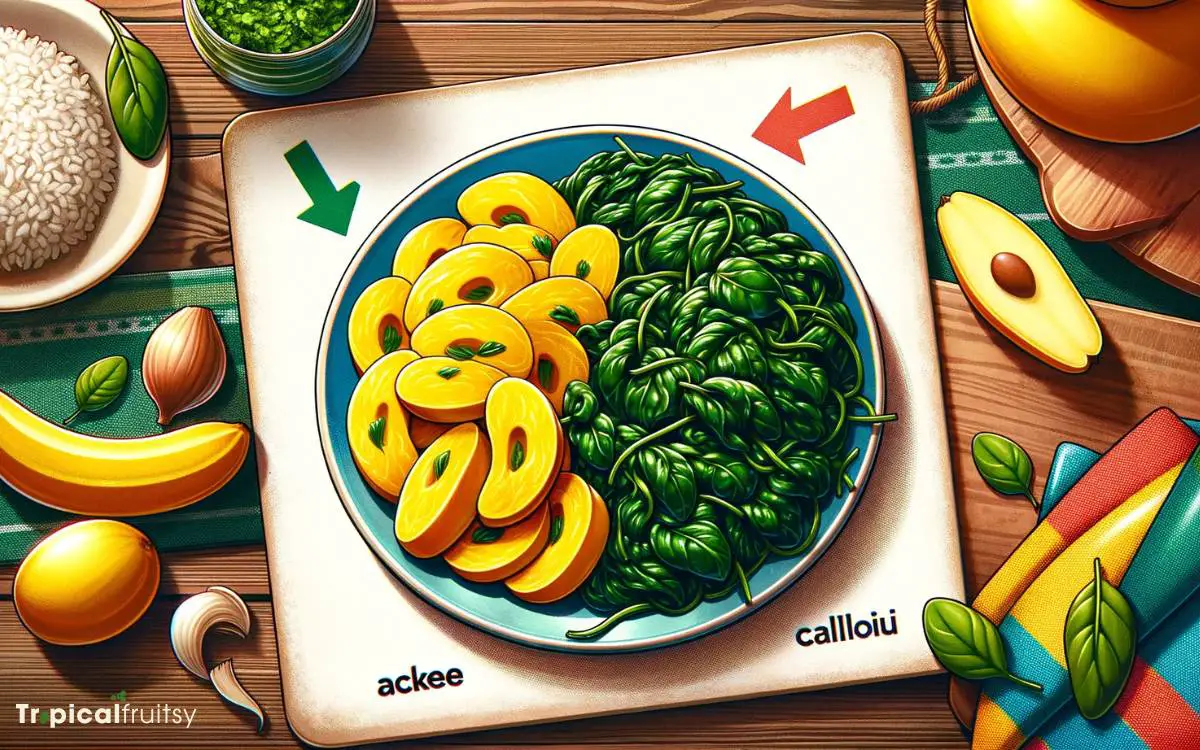
Key Takeaway
Ackee: Jamaica’s National Fruit
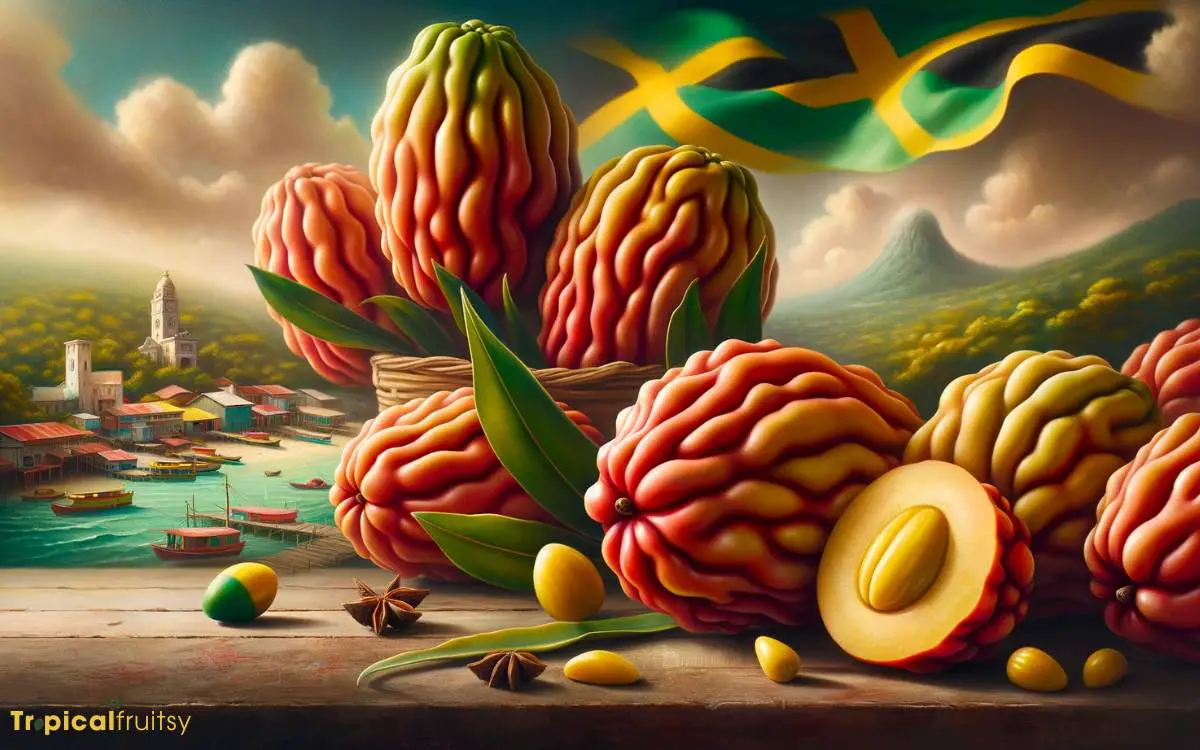
Jamaica’s national fruit, ackee, is a distinctive culinary staple integral to the island’s cuisine and cultural identity.
The fruit, bearing the scientific name Blighia sapida, is not indigenous to Jamaica but was introduced from West Africa during the 18th century.
Ackee’s significance is not merely gastronomical but also symbolic, representing a historical and socio-economic tapestry that intertwines with the island’s colonial past and the transatlantic slave trade.
Ackee figures prominently in national dishes, most notably in ‘ackee and saltfish,’ which is Jamaica’s national dish.
The fruit’s unique characteristics—its rich, buttery texture and subtle taste—enable it to complement various ingredients.
However, its culinary use requires care, as the unripe ackee arils contain toxic hypoglycin A, necessitating informed preparation to ensure safety.
The History of Ackee

How did ackee, now an emblematic feature of Jamaican cuisine, make its journey from West Africa to the Caribbean? This vibrant fruit’s odyssey is deeply enmeshed with colonial history and the transatlantic slave trade.
Ackee’s introduction to Jamaica is often attributed to the British, who transported it aboard their ships in the 18th century.
It is believed that the ackee plant was brought from its native Ghana, formerly known as the Gold Coast, to Jamaica around 1778.
| Year | Event | Significance |
|---|---|---|
| 1778 | Introduction to Jamaica | Marked the beginning of ackee’s integration into Jamaican culture |
| 18th Century | Spread throughout the Caribbean | Became a staple food for enslaved Africans |
| 19th Century | Commercial cultivation | Ackee’s economic importance grew alongside cultural significance |
In analyzing its history, one observes how ackee’s integration into Jamaican society parallels the island’s own complex socio-cultural evolution.
Nutritional Profile of Ackee
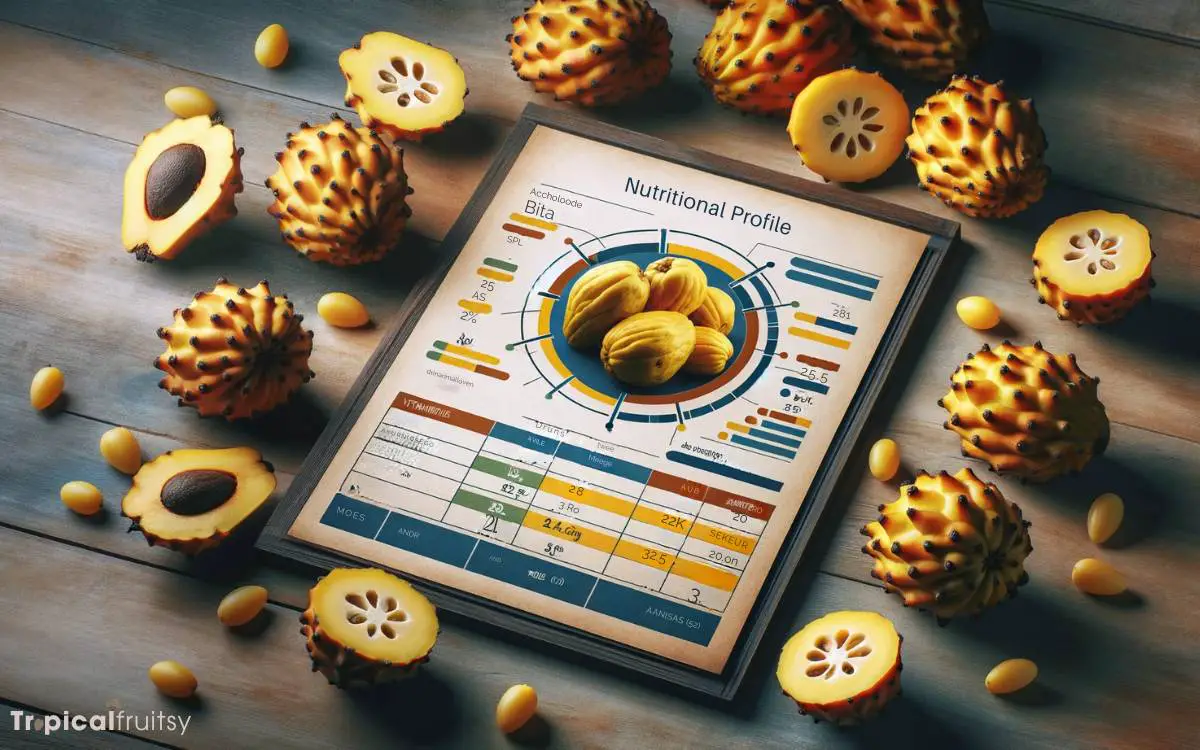
While ackee’s historical journey to Jamaica is well-documented, its nutritional profile reveals why it has become a staple in the diet of Jamaicans and others in the Caribbean region.
Ackee is rich in essential fatty acids, notably unsaturated fats, which are beneficial for heart health. It is a good source of dietary fiber, which aids in digestive health and satiety.
The fruit also provides a variety of vitamins and minerals, including vitamin C, which is crucial for immune function, and vitamin A, important for vision and skin health.
Ackee’s protein content, though not as high as in legumes and meats, contributes to its nutritional value.
Analyzing its composition, it’s evident that ackee’s inclusion in meals contributes to a balanced diet, offering a synergy of nutrients essential for maintaining overall health.
Preparing and Cooking Ackee
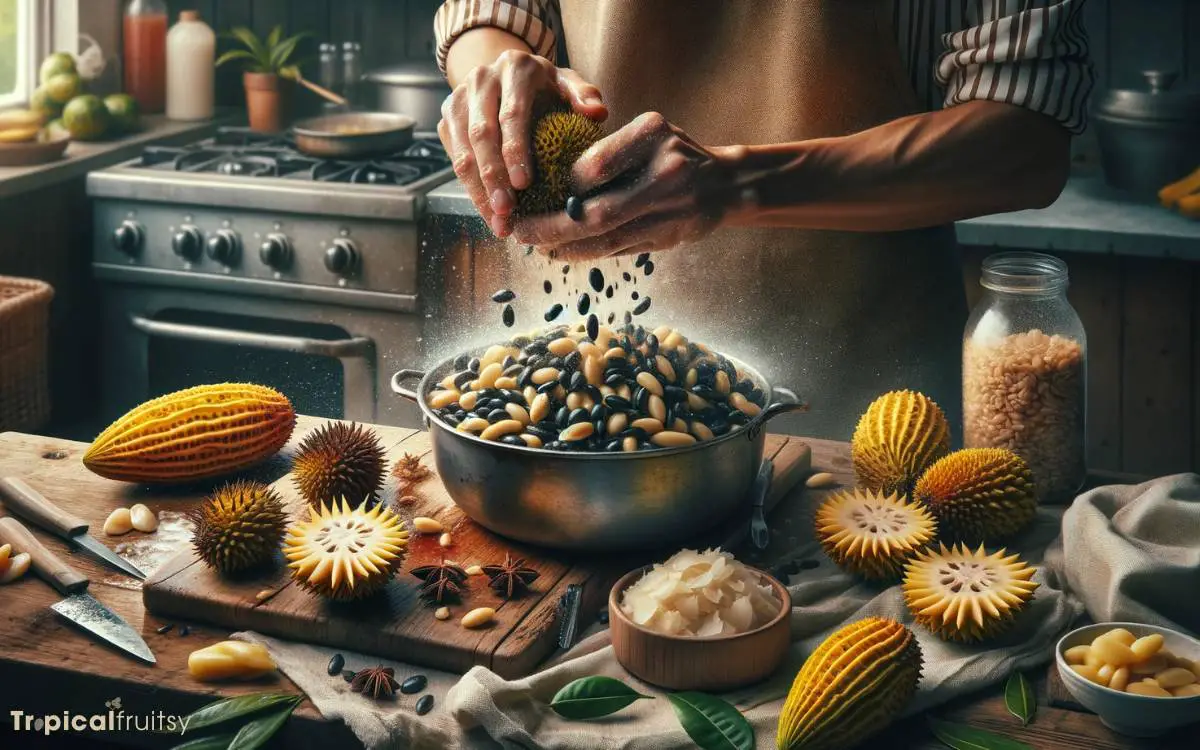
Transitioning from its nutritional benefits, the preparation and cooking of ackee require careful attention to ensure both safety and optimal flavor.
Ackee must be allowed to ripen fully on the tree and open naturally to reveal its edible portions.
Unripe or improperly prepared ackee contains hypoglycin A, a toxic substance that can cause severe health implications known as Jamaican Vomiting Sickness. Therefore, meticulous selection is paramount.
Once the ripe fruit is harvested, the arils—the fleshy sections around the seeds—are carefully extracted and the red membrane removed.
Cooking typically involves simmering the arils until they are tender, a process that detoxifies the fruit and enhances its unique, buttery flavor. With the ackee now properly addressed, we shift our focus to callaloo: a Caribbean staple.
Callaloo: A Caribbean Staple
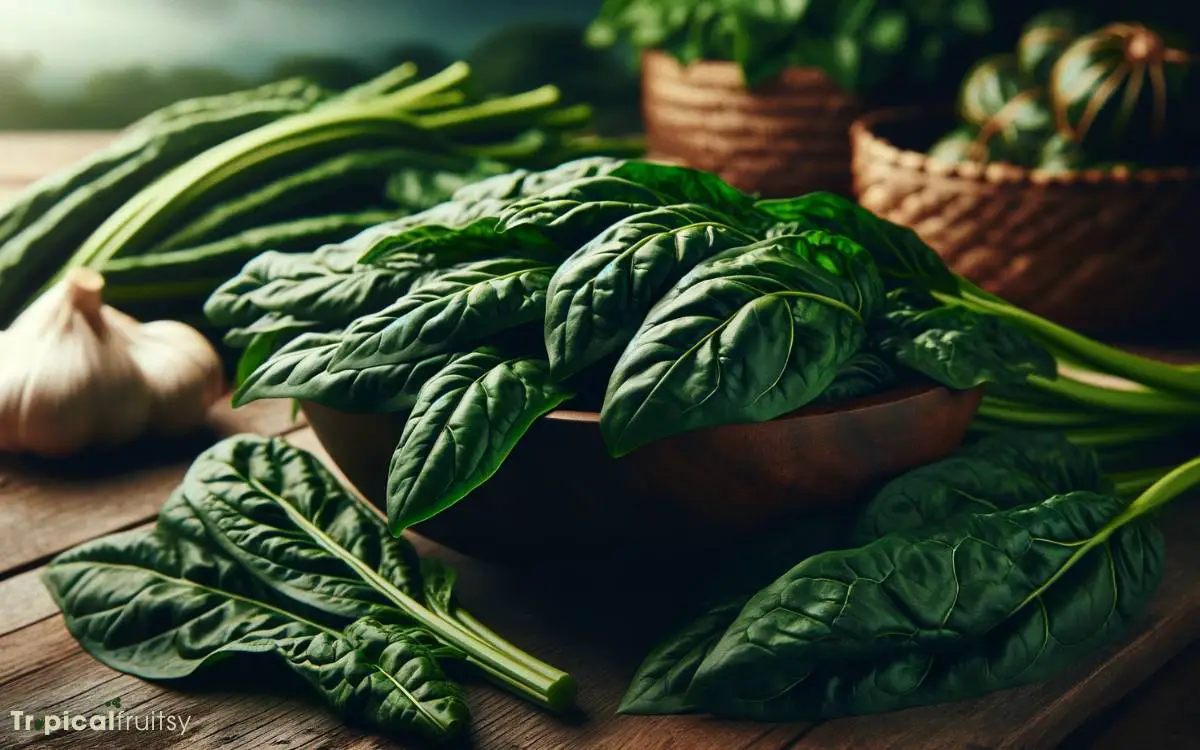
Callaloo, often considered a quintessential element of Caribbean cuisine, is not only culturally significant but also noteworthy for its nutritional profile.
It comprises a rich tapestry of leafy greens, primarily amaranth or taro, which serve as a substantial source of vitamins, minerals, and fiber.
Various culinary practices across the Caribbean region have led to a diverse spectrum of cooking techniques for callaloo, highlighting its versatility and adaptability to different palates and dietary preferences.
Nutritional Benefits
Within the leaves of callaloo, a powerhouse of vitamins and minerals essential to human health can be found, making this leafy green a nutritional cornerstone in Caribbean cuisine.
Callaloo’s rich nutritional profile offers numerous health benefits, which are central to its value in diets across the Caribbean and beyond.
- Vitamin A: Supports vision and immune function.
- Vitamin C: Crucial for the growth, development, and repair of all body tissues.
- Calcium: Vital for bone health and maintaining a healthy nervous system.
- Iron: Essential for blood production and oxygen transport.
- Fiber: Enhances digestive health and can aid in weight management.
A scholarly analysis reveals that the integration of callaloo into a balanced diet can contribute significantly to the maintenance of health and prevention of nutrient deficiencies.
Cooking Variations
Callaloo dishes, a staple in Caribbean cuisine, showcase a myriad of cooking styles that range from simple steamed greens to complex stews infused with an assortment of spices and proteins.
This diversity in preparation reflects the adaptability of callaloo to various palates and cultural influences throughout the Caribbean.
Traditionally, callaloo is simmered with ingredients such as onions, garlic, tomatoes, and Scotch bonnet peppers, which impart depth and heat to the dish.
The incorporation of salted meats or seafood is common, adding a savory dimension that balances the earthiness of the greens.
Each island’s rendition of callaloo carries its unique signature, influenced by historical trade routes, indigenous practices, and the availability of local ingredients, resulting in a rich tapestry of flavors and textures that are emblematic of the region’s culinary heritage.
The Origins of Callaloo
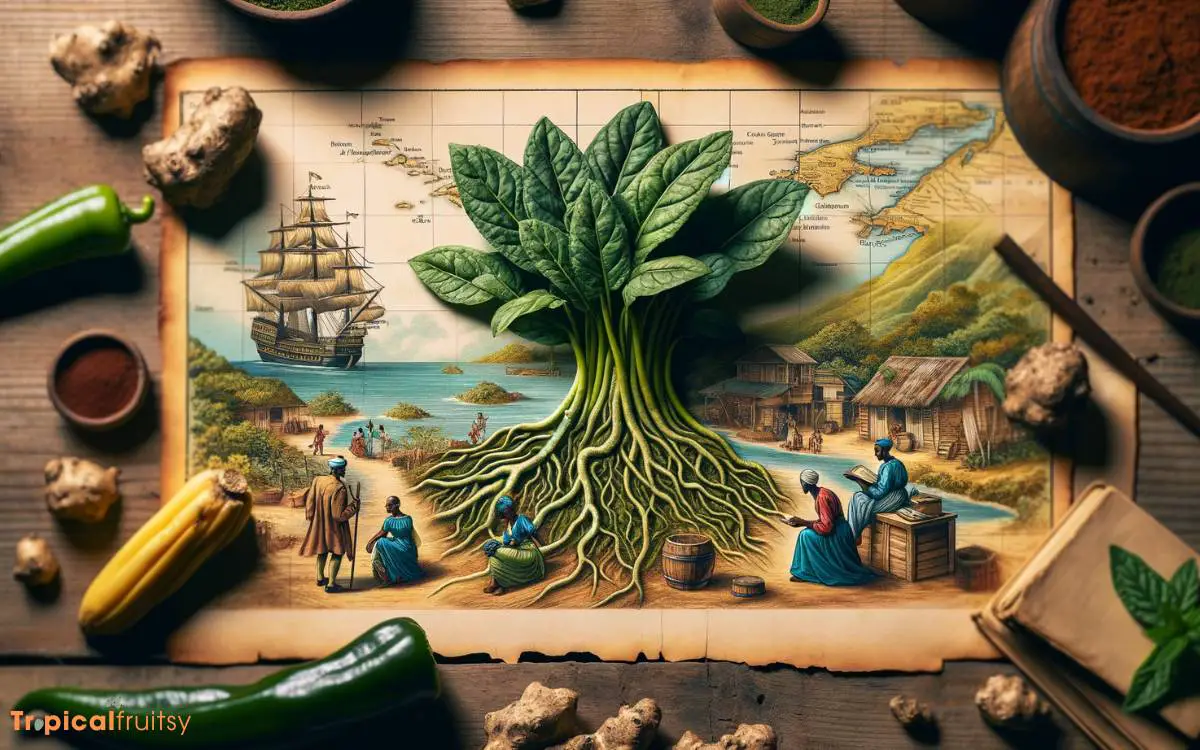
Tracing the roots of callaloo leads to the warm, tropical regions of West Africa and the Caribbean, where this leafy green stew has evolved into a culinary staple.
The dish exemplifies a rich tapestry of cultural interplay, notable for its adaptability and the emotional resonance it holds within these communities. Its historical journey reflects the movement of peoples and the transfer of traditions.
- Nourishment: Sustaining generations with its hearty and nutritious embrace.
- Heritage: Echoing the voices of ancestors through simmering pots.
- Survival: A testament to adaptability and resilience in diverse environments.
- Community: A shared bowl fostering unity and collective memory.
- Identity: Embodies the soulful essence of regional culinary narratives.
Analytically speaking, callaloo’s story is a microcosm of diasporic culinary evolution, demonstrating the contextual synthesis of indigenous ingredients and external influences into a dish that transcends its material composition, becoming a vehicle for cultural identity and emotional connection.
Health Benefits of Callaloo

Callaloo, a leafy vegetable prominent in Caribbean cuisine, is lauded for its dense nutritional profile, which includes essential vitamins and minerals.
Its antioxidant properties suggest a potential role in mitigating oxidative stress, thereby contributing to chronic disease prevention.
Furthermore, the high fiber content found in callaloo supports digestive health, indicating its beneficial impact on gastrointestinal function.
Rich in Nutrients
The nutritional profile of callaloo is impressive, offering a plethora of vitamins and minerals that contribute to its myriad health benefits.
Analytically speaking, callaloo is a nutrient-dense leafy green, integral to Caribbean cuisine and increasingly recognized for its health-promoting properties within a scholarly context.
- Vitamin A: Essential for healthy vision and immune function.
- Vitamin C: A powerful antioxidant that aids in repairing tissues and enzymatic production.
- Calcium: Supports bone health and muscular functions.
- Iron: Critical for blood production and oxygen transport.
- Fiber: Enhances digestive health and can aid in blood sugar regulation.
For connoisseurs of healthful foods, understanding callaloo’s nutritional content underscores its value within a well-rounded diet, providing essential nutrients that underpin various physiological functions and promote overall well-being.
Antioxidant Properties
In addition to its rich nutrient profile, callaloo is endowed with potent antioxidant properties that play a crucial role in combating oxidative stress and bolstering the body’s defense against chronic diseases.
The leaves of callaloo contain various phytonutrients, including vitamins A, C, and E, alongside minerals such as manganese and selenium, which are intrinsically linked to antioxidant functions.
The presence of these compounds contributes to the neutralization of free radicals, thereby preventing cellular damage that can lead to a host of degenerative conditions.
Analytical studies suggest that the regular consumption of callaloo may be associated with a reduced risk of diseases mediated by oxidative stress, such as cardiovascular disorders and certain cancers.
Thus, incorporating callaloo into one’s diet may offer considerable health benefits aligned with its antioxidant capacity.
Digestive Health Support
Continuing the exploration of callaloo’s health benefits, one notable aspect is its ability to support digestive health through its high fiber content.
The ingestion of fiber is pivotal for the maintenance of a healthy digestive tract, with several implications:
- Prevents constipation by promoting regular bowel movements, reducing the incidence of discomfort.
- Enhances satiety, which can aid in weight management and mitigate overeating.
- Lowers risk of digestive disorders, such as diverticulitis and hemorrhoids.
- Regulates blood sugar levels, beneficial for individuals managing diabetes.
- Supports the growth of beneficial gut bacteria, integral to overall gut health.
The scholarly scrutiny of callaloo’s fiber content underscores its significance in a balanced diet.
Callaloo in Cuisine
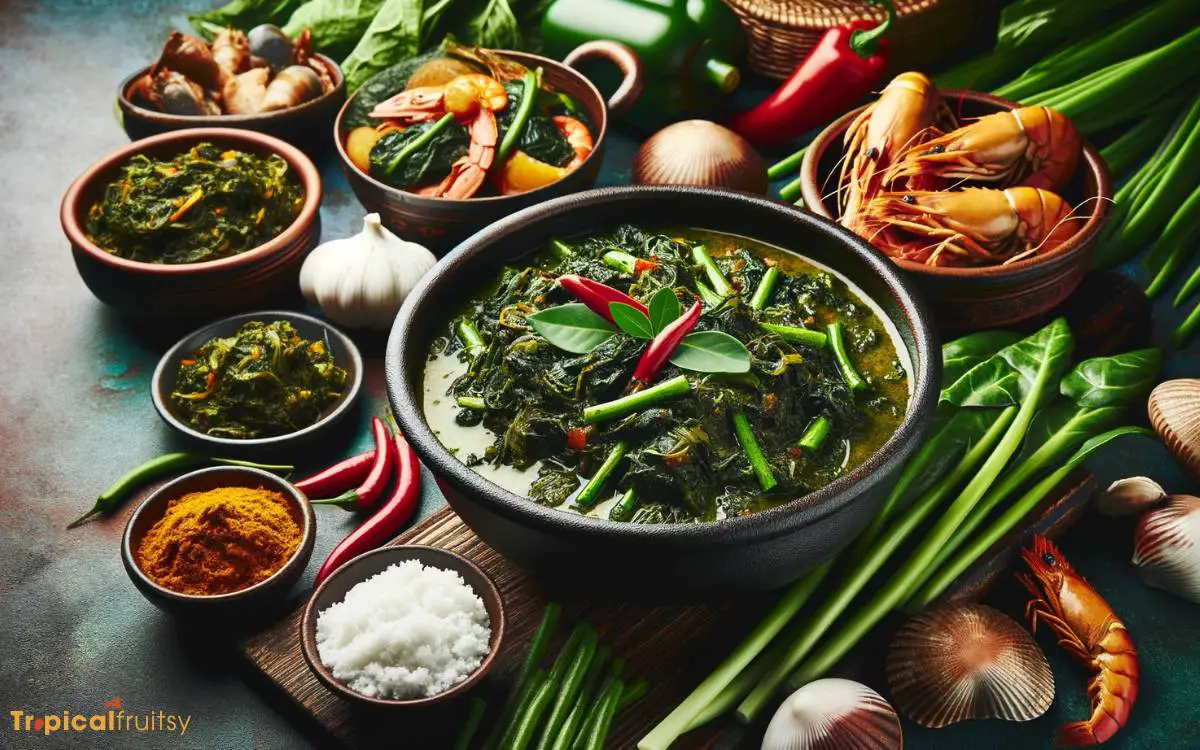
Callaloo, a leafy green vegetable prominent in Caribbean cuisine, is often simmered with aromatic herbs and spices to create a flavorful and nutritious dish.
This traditional ingredient, derived from the leaves of the Amaranth plant, or sometimes the taro or xanthosoma plant, embodies a rich cultural heritage and is a staple in a myriad of culinary traditions within the region.
Its preparation varies across different islands, reflecting a tapestry of colonial influences and indigenous practices.
In an analytical context, callaloo’s inclusion in the Caribbean diet is not merely a reflection of local gastronomy but also illustrates the adaptive nature of culinary traditions to utilize available indigenous resources, thereby fostering a sustainable and self-sufficient food culture that is both healthful and indicative of the region’s biodiverse agriculture.
Do Caribbean Countries Have Different Names for Ackee?
Yes, the ackee name in the Dominican Republic is “aguay.” Each Caribbean country has its own unique name for the ackee fruit. In Jamaica, it’s known as “ackee” while in Haiti it’s called “ayiti.” These diverse names reflect the rich cultural and linguistic diversity of the Caribbean region.
Ackee and Callaloo in Culture
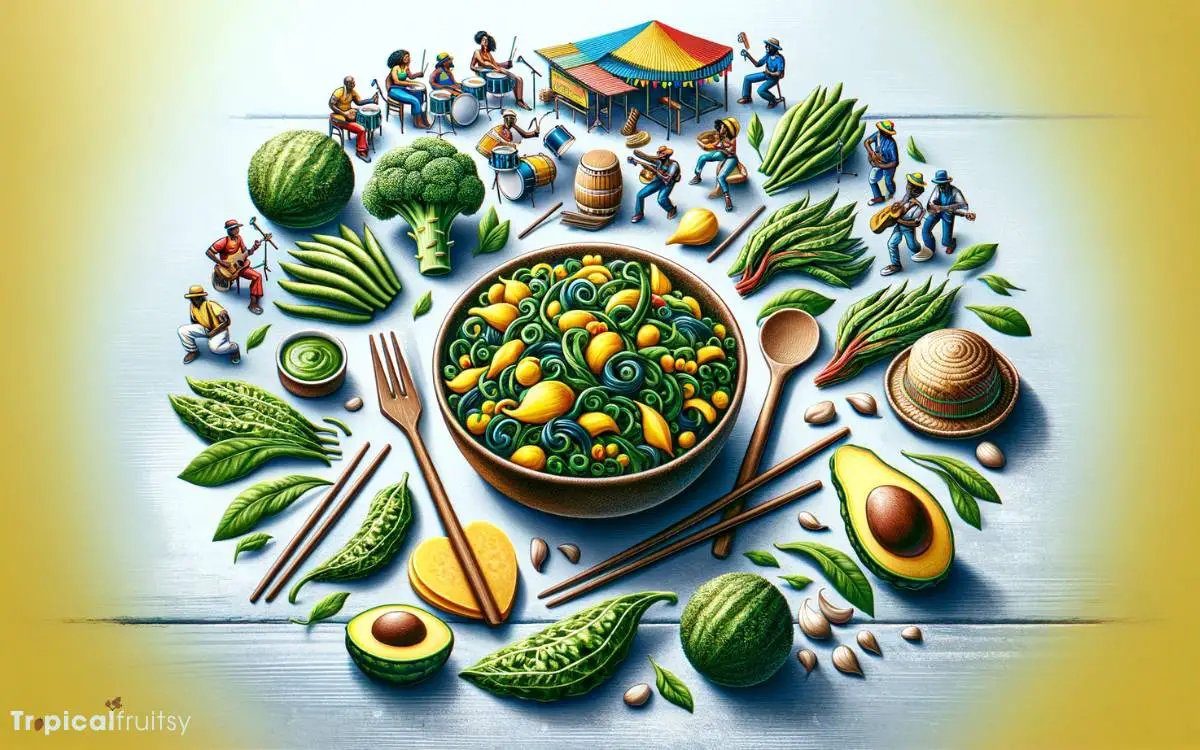
Within the fabric of Caribbean society, ackee and callaloo are ingrained not only as dietary staples but also as cultural symbols with deep historical roots.
These foods are emblematic of the region’s unique blend of indigenous, African, and European influences, reflecting a complex history of colonization, slavery, and cultural synthesis.
Ackee’s arrival with enslaved Africans signifies a story of survival and resilience, resonating deeply with descendants. Callaloo’s versatility mirrors the adaptive and innovative spirit of Caribbean peoples.
Festivals and family gatherings often feature dishes like ackee and saltfish, celebrating shared heritage. The preparation of these foods acts as a means of preserving traditional knowledge and fostering community bonds.
Literature and music frequently reference ackee and callaloo, underscoring their significance beyond mere sustenance.
Analyzing these cultural elements provides insight into the collective identity and social fabric of the Caribbean.
Conclusion
Ackee and callaloo stand not only as culinary staples of Caribbean cuisine but also as cultural symbols steeped in historical significance.
Ackee, with its rich nutritional value, and callaloo, known for its health-promoting properties, contribute substantially to the dietary patterns in the region.
Their pervasive influence on Caribbean culture and cuisine reflects the adage that food is indeed the way to the heart of a culture’s identity.






